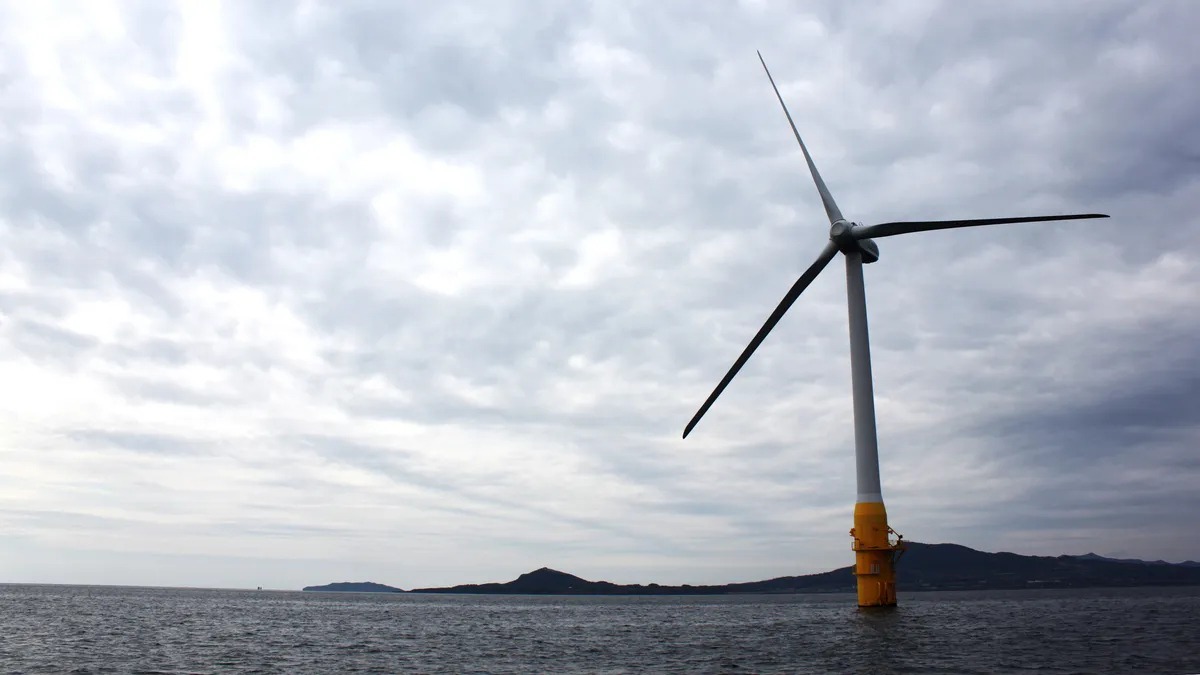Dive Brief:
- Connecticut's Department of Energy and Environmental Protection (DEEP) said Wednesday it has selected Deepwater Wind for the state's first foray into offshore wind. The company's Revolution Wind project will provide 200 MW to the state, along with 400 MW to Rhode Island.
- The offshore wind purchase is part of DEEP's acquisition of 250 MW of clean energy resources. Other projects selected by Connecticut include about 50 MW of fuel cells, spread over four projects, and a 1.6 MW anaerobic digestion generation project.
- State officials said the procurement will tap clean energy resources equivalent to 4.7% of Connecticut’s load.
Dive Insight:
While Revolution would be Connecticut's first offshore wind project, it is not a done-deal yet. The selected projects must negotiate 20-year contracts with electric distribution utilities Eversource and United Illuminating, which will then be brought to the state's Public Utilities Regulatory Authority for final approval.
The offshore wind industry is beginning to gain a toehold in the United States, and it's expected to grow rapidly. Between Connecticut, Rhode Island and Massachusetts, the trio have announced 1.4 GW in offshore wind plans.
There is only one operational facility to date, but energy prices from projects in development have fallen dramatically. Massachusetts announced its first offshore wind project last month: Vineyard Wind will generate 800 MW when complete. The project is expected to begin construction next year and be online by 2021.
As part of its proposal, Deepwater Wind has committed to invest $15 million in the New London State Pier. The development of the wind generation project is expected to create about 1,400 direct, indirect and induced jobs, DEEP said in a statement.
“DEEP is focused on providing cheaper, cleaner and more reliable energy to the residents and businesses of Connecticut. These six projects accomplish that goal at every step," Commissioner Robert Klee said in the statement.
DEEP said it will conduct another clean energy solicitation this summer. Fuel cells will be eligible for the annual Low Emission Renewable Energy Credit auction, the agency said, which has been extended a year. Fuel cells and anaerobic digestion will also be eligible for the successor auction program, which calls for up to an additional 10 MW per year of low-emission renewables deployment for the next six years, DEEP said.














